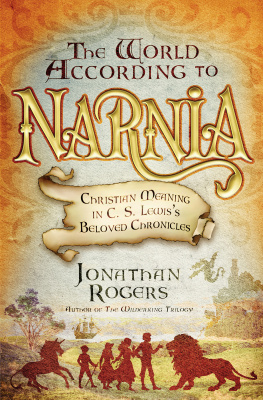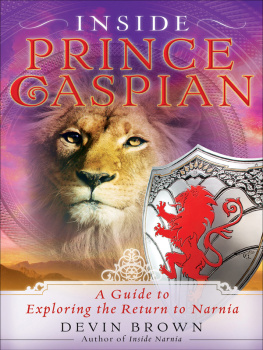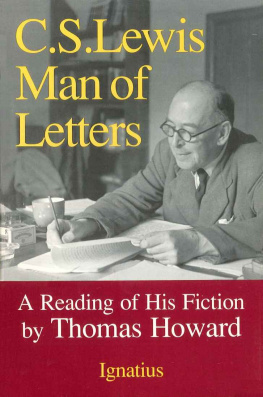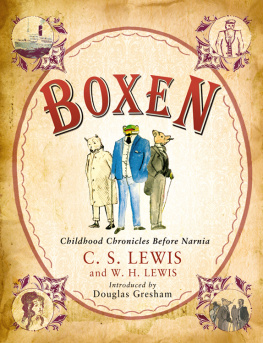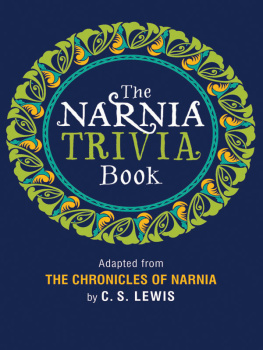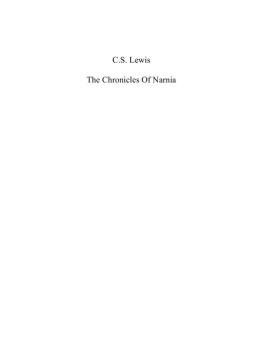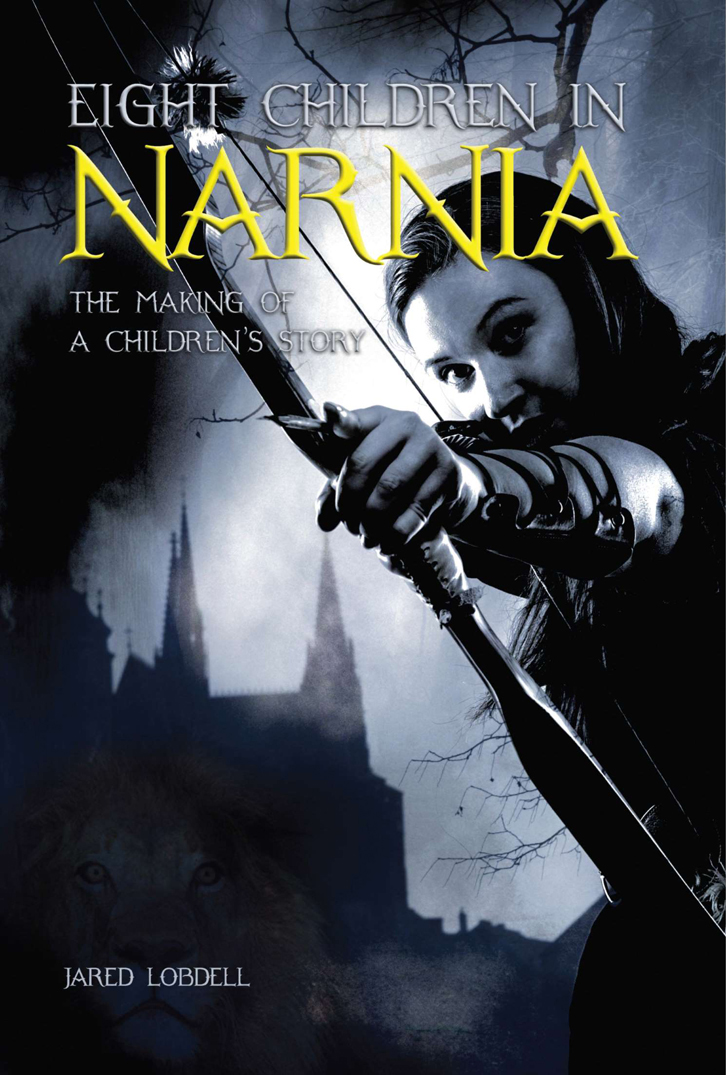
Other Books by Jared Lobdell
Seeking the Lord (2015, printing limited to 100 numbered copies)
The Rise of Tolkienian Fantasy (2005)
The World of the Rings: Language, Religion, and Adventure in Tolkien (2004)
The Scientifiction Novels of C.S. Lewis: Space and Time in the Ransom Stories (2004)
This Strange Illness: Alcoholism and Bill W. (2004)
A Tolkien Compass (2003, 1975)
The Detective Fiction Reviews of Charles Williams, 19301935 (2003)
The Four Corners of the Tapestry: A Casebook of Palmer Hopkins (1999)
Action at the Galudoghson, December 14, 1742 (1994)
Further Materials on Lewis Wetzel and the Upper Ohio Frontier (1993)
Recollections of Lewis Bonnett, Jr. (17781850) and the Bonnett and Wetzel Families (1991)
Indian Warfare in Western Pennsylvania and North West Virginia at the Time of the American Revolution (1992)
Sylvia Dubois: A Biography of the Slav Who Whipt Her Mistres and Gand Her Freedom (1988)
England and Always: Tolkiens World of the Kings (1981)

To find out more about Open Court books, call toll-free 1-800-815-2280, or visit our website at www.opencourtbooks.com.
Open Court Publishing Company is a division of Carus Publishing Company, dba Cricket Media.
Copyright 2016 by Carus Publishing Company, dba Cricket Media
First printing 2016
All rights reserved. No part of this publication may be reproduced, stored in a retrieval system, or transmitted, in any form or by any means, electronic, mechanical, photocopying, recording, or otherwise, without the prior written permission of the publisher, Open Court Publishing Company, 70 East Lake Street, Suite 800, Chicago, Illinois 60601.
Eight Children in Narnia: The Making of a Childrens Story
ISBN: 978-0-8126-9910-4
This book is also available as an e-book.
Library of Congress Control Number: 2016949427
For C.S.L.
And underneath is written,
In letters all of gold,
How valiantly he kept the bridge
In the brave days of old.
and for my wife
Jane Starke Lobdell
Table of Contents
Guide
Contents
T he seven years beginning with 1950 and ending with 1956 saw the publication of seven childrens books by the Ulster Irish (but Oxford, then Cambridge) scholar, essayist, literary historian, Christian apologist, versifier and occasional poet, novelist, science-fiction and fantasy writer, philosopher (though old-fashioned), satirist and controversialist, Clive Staples Lewis, known to his early friends and relations as Jacks, and later to many as Jack, and to the world at large as C.S. Lewis.
I counted him as a friend by correspondence, in the last five years of his life, as I now count his younger stepson Douglas Gresham, and have counted his friends Ronald Tolkien, Lord David Cecil, Kenneth Hamilton Jenkin, Nevill Coghill, and two whom I have known also in person, Owen Barfield and Christopher Tolkien. I first read his seven childrens books, now known as the Chronicles of Narnia, as they came outnot because I was reading childrens books in general at that time, but because they were by C.S. Lewisthe same reason I read an old letter by him on The Kingis Quair published in the Times Literary Supplement in 1929, or the spoof law case he wrote up with Owen Barfield, Mark v. Tristram, later on. (I wish I still had the copy Owen gave me.) I read them for the mind of the maker (or, as Professor Tolkien might say, the sub-creator). I read them to be with C.S. Lewis.
He might tell us that is not the bestor even a very goodreason to be reading childrens books (after all, he wrote a bookor half a bookThe Personal Heresy, partly against mixing what is in a book with what is or was in the author, or at least in the authors life). But then, on the other hand, I can recall his lament that there was no weatherno atmosphere, almost no real flavorin The Three Musketeers, and along that line, I think of the flavor of Narnia as coming from his mind and I think of that flavor, in a way, as a major part of Narnias success. I am not readingand I have not ever readthe Narnia books as a guide to the mind of C.S. Lewis (though perhaps as a connection), but I am looking at the mind and thought (and experience) of C.S. Lewis, as I understand them (and therefore to some extent my own mind and thought and experience), as something of a guide to his Narnia. And here I should mention there is one book on Narnia (some of it in fact from Lewis) that has contributed greatly to my thoughtWalter Hoopers Past Watchful Dragons (Collier Books paperback 1979, reprinted from Imagination and the Spirit, ed. Charles Huttar, Grand Rapids, 1971).
In connection with my reason for reading the Narnia books (and in my defense), here is one thing Lewis said on the matter of writing for children. He told us, in effect, that if one is going to write a childrens story, it ought not to be written with a designed moral, because the only moral of any value comes not by specific design, but from the whole cast of the authors mind (On Three Ways of Writing for Children given 1952, in On Stories, 1982, pp. 4142), going on to say the story must come from what the author shares with the children in his (or her) audience, and its matter must be part of the habitual furniture of the authors mind. And Lewis remarks that an author, to the child, is outside the difficult relations between child and parent or child and teacher, not even an uncle but a freeman and an equal, like the postman, and the butcher, and the dog next door (p. 43).
And not only to the child but to any who reads as a childand of such is the Kingdomto anyone reading or trying to read as a child. One thing I should make clear. A couple of years ago (or is it a decade ago?) I published a book on C.S. Lewiss Scientifiction novels, and was (perhaps predictably) criticized for not spending time summarizing what other writers had to say about those novelsparticularly what had been said by David Downing, who teaches a few blocks down the street from where I live, at Elizabethtown College. And it is likely some reviewer of this book will comment that I should have put more in from David Downings book on Narnia (or from others of the half dozen books on Narnia out in the last few years, or from biographers of C.S. Lewis). But this book is what I have to say on Narnia and C.S. Lewis, from my coign of vantage (with Walter Hoopers help back in 1971 and Lewiss before), and thats based on my experience and my reading and understanding of C.S. Lewis, and my appreciation for the sources and analogues of his Narnianot anyone elses experience or appreciation or reading or understanding (except Walters additional information from Lewis)and unless, of course, their expression of their understanding convinces me that I have been wrong on points where we disagree: the one exception, the work of Michael Ward, will be noted much later on, though not at any great length.
For me, the first knowledge that C.S. Lewis was writing what turned out to be the Narnia series came in Chad Walshs little 1949 book, C.S. Lewis: Apostle to the Skeptics, in which he mentions that Lewis was writing a childrens book after the manner of E. Nesbit. By the time I got around to checking out E. Nesbit (which was actually quite a while later),


